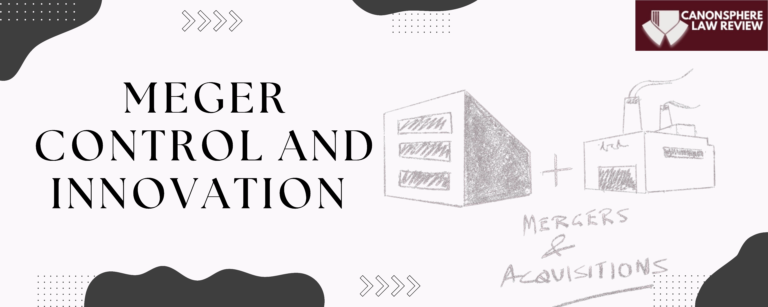This Long Article has been written by Muskan. She is a Law Student at S.S Jain Subodh Law College, Jaipur.
ABSTRACT
In an increasingly innovation-driven economy, mergers and acquisitions (M&A) have evolved from mere expansion tools to pivotal mechanisms shaping industry competition. Traditional merger control, which primarily focuses on market share and price effects, is being reassessed to address the dynamic challenges posed by innovation. This is especially pertinent in sectors like pharmaceuticals, artificial intelligence (AI), and fintech, where the pace of technological advancements has redefined competitive boundaries.
A key concern in the modern merger landscape is the phenomenon of “killer acquisitions,” where dominant firms acquire emerging innovators to neutralize potential competitive threats. Such acquisitions often prevent the disruptive potential of nascent technologies, stifling future innovation. This article explores the theoretical underpinnings of merger control in innovation-driven markets, specifically the innovation harm theory, which suggests that mergers can undermine future market competition by eliminating potential competitors.
The article further contrasts ex-ante and ex-post regulatory mechanisms, evaluating their respective roles in preventing anti-competitive consolidation without stifling market growth. Through case studies such as Facebook’s acquisition of Instagram, Bayer’s merger with Monsanto, and the Zee-Sony merger in India, the article critically assesses how competition regulators have navigated the complex intersection of innovation and market consolidation.
A comparative analysis of merger review practices in the European Union, the United States, and India reveals varying approaches to balancing innovation concerns with economic efficiency. The article concludes by advocating for a more nuanced, innovation-sensitive merger review framework that prioritizes technological progress while ensuring legal certainty and pro-competitive outcomes. By adjusting the focus of merger control, regulators can better navigate the challenges of fostering innovation while preventing monopolistic tendencies in high-tech industries.

